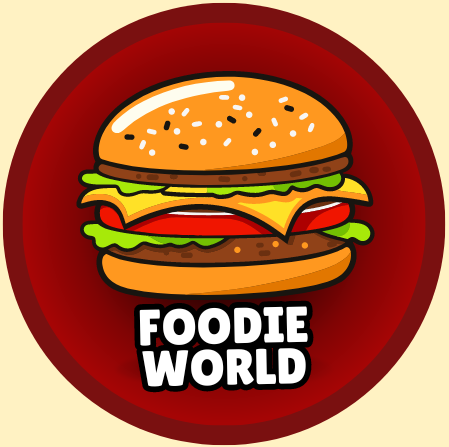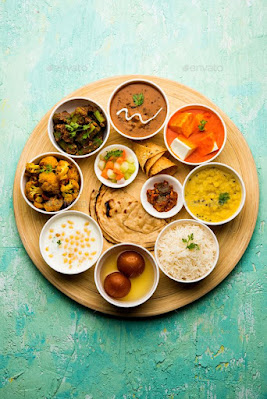Food is an interesting subject! It’s a reflection of culture, history, and even individual identity, not just about survival. There is an incredible variety of cuisines in the world, each with its own special ingredients, preparation techniques, and flavors.
Were you aware that some meals might evoke various feelings and memories? The aroma of freshly made bread may take you back to your grandmother’s home, or the flavor of a dish you loved as a youngster may bring back fond memories.
Food is a major component in festivities and social events. Sharing a meal together for a family meal, a romantic date, or a joyous holiday feast strengthens relationships.
Food can be found in many different forms, such as fruits, vegetables, cereals, meat, fish, dairy products, and processed foods. It can also be produced from plants, animals, or other sources. Food preparation and consumption are integral parts of human culture and social interaction, frequently acting as a vehicle for self-expression, celebration, and camaraderie.Food not only offers nourishment but also delight and contentment due to its flavor, scent, and consistency. To promote general wellbeing and fend off diseases linked to poor nutrition, it’s crucial to keep a balanced diet and choose healthful foods.
Food is a complex and multifaceted aspect of human life, extending beyond its basic function of sustenance. Here are a few more interesting aspects to consider:
Cultural Significance:
Customs, traditions, and food are intricately entwined. Dishes, ingredients, and culinary customs that are specific to certain areas and groups are a reflection of their past and culture. In social gatherings, religious events, and festivals, sharing meals is frequently a focal point that strengthens cultural identity and promotes ties within the group.
Artistry and Creativity:
Cooking is frequently seen as an artistic endeavor, with both professional chefs and home cooks utilizing flavor combinations, eye-catching presentation strategies, and inventive cooking techniques to convey their ideas. The culinary arts cover a broad spectrum of abilities and approaches, from avant-garde gastronomy that pushes the limits of taste and texture to ancient methods that have been handed down through the years.
Health and Well-Being:
An important area of nutrition science is the connection between diet and health. Maintaining good health and preventing diseases requires eating a balanced diet that contains necessary nutrients in the appropriate quantities. However, sociocultural variables can affect dietary choices and public health outcomes. These include cultural norms, food marketing, and access to healthy food options.
Economic Impact:
The food sector, which includes retail, distribution, agricultural, and food production, makes a substantial economic contribution to the world economy. Food is essential to trade, employment, and economic growth—especially in rural areas where agriculture is the main source of income. However, problems with food sustainability and fairness might include things like economic inequality, unequal access to resources, and food poverty.
Environmental Aspects:
The production and consumption of food have a significant impact on the environment, affecting greenhouse gas emissions, water and land use, and biodiversity loss. Sustainable food systems include methods like organic farming, agroecology, and minimizing food waste in an effort to lessen these negative effects on the environment. Furthermore, the idea of “food miles” draws attention to the environmental impact of long-distance food transportation, which in turn sparks a renewed interest in eating locally and seasonally.
In summary, food is a reflection of our culture, creativity, health, economy, and environment in addition to being a source of physical nourishment. We may appreciate food’s significance in our lives and society more fully if we are aware of its many facets.
Our knowledge about food comes from various sources, including:
Experience:
Our individual food experiences have a big impact on how we perceive and choose foods. Cooking, trying out new dishes, and tasting various flavors all add to our culinary expertise.
Family and Culture:
Knowledge about food is passed down from one generation to the next through family customs, cultural customs, and regional cuisines. We study customary cooking methods, recipes, and the cultural and historical significance of particular dishes.
Education and Learning:
Agricultural studies, culinary arts programs, and nutrition classes are examples of formal education that offers structured learning about food-related subjects. This entails being aware of food safety procedures, cooking techniques, nutritional concepts, and the science underlying food production.
Media and Information:
There is a wealth of information available regarding food on books, magazines, television programs, websites, and social media platforms. Through a variety of media, we can learn about new recipes, culinary tricks, dietary trends, and cultural culinary customs.
Health and Science:
Studies, scientific publications, and medical experts can provide information about dietary recommendations, the nutritional makeup of foods, and the effects of food on overall health and well-being. We can make more educated judgments regarding our nutrition and lifestyle thanks to this knowledge.
Community and Social Interactions:
We can share recipes, learn new foods, and exchange knowledge by interacting with friends, family, chefs, farmers, and other food aficionados. Opportunities to discover a variety of culinary experiences are offered by farmers’ markets, cooking classes, food festivals, and community gatherings.
Technology and Innovation:
Technological developments have an impact on our knowledge of and access to food. Examples of these developments include food processing methods, agricultural practices, and cooking equipment. Furthermore, mobile apps and digital platforms offer easy ways to order food, access recipes, and engage with food-related communities.
We create a thorough understanding of food that takes into account its cultural, nutritional, scientific, and practical aspects by integrating data from various sources.
The classification of “good” and “bad” foods is a bit nuanced and can vary depending on individual health goals, dietary preferences, cultural beliefs, and nutritional needs. However, here’s a general overview:
“Good” Foods:
Fruits and vegetables:
Packed with vitamins, minerals, fiber, and antioxidants, these foods are crucial parts of a diet that is well-balanced. They promote general well-being and could lower the chance of developing chronic illnesses.
Whole Grains:
Whole grains are a good source of fiber, vitamins, minerals, and carbohydrates. Examples of whole grains include brown rice, quinoa, oats, and whole wheat. They support healthy digestion and offer long-lasting energy.
Lean Proteins:
Protein is essential for the production of hormones, muscle repair, and immunological function. Foods high in protein include fish, poultry, tofu, legumes, and lean meat cuts.
Healthy Fats:
Foods high in monounsaturated and polyunsaturated fats, which are good for the heart and brain function, include avocados, nuts, seeds, and olive oil.
Dairy or Dairy Alternatives:
Calcium, vitamin D, and protein are essential for healthy bones and overall nutrition and can be found in dairy products and fortified dairy substitutes.
Herbs and Spices:
Because of their anti-inflammatory and antioxidant qualities, herbs and spices can enhance food flavor while also possibly providing health benefits.
“Bad” Foods:
Processed and Ultra-Processed Foods:
Foods that are high in unhealthy fats, refined grains, artificial additives, and added sugars—such as candy, chips, sodas, and fast food—are frequently regarded as less nutritious and, when consumed in excess, may exacerbate conditions like diabetes, obesity, and heart disease.
Trans Fats:
Trans fats should be consumed in moderation as they are known to raise the risk of heart disease. They are present in partially hydrogenated oils, which are used in some processed foods.
Highly Sweetened or Salty Foods:
When ingested in excess, foods with high added sugar or sodium content, such as sugary cereals, sugary snacks, and salty processed foods, can lead to health problems like tooth decay, high blood pressure, and weight gain.
Fried Foods ;
that have been deep-fried or cooked in unhealthy oils may contain a lot of calories, bad fats, and potentially dangerous substances that are created during the frying process.
Alcohol and Sugary Drinks:
Consuming sugary drinks, such as soda, energy drinks, and juices with added sweeteners, in excess can lead to weight gain, liver damage, and other health issues.
Making dietary decisions requires moderation, balance, and knowledge of each person’s unique nutritional requirements. Including a range of foods high in nutrients and reducing the amount of less nutritious foods consumed can improve general health and wellbeing. Seeking advice from a registered dietitian or healthcare professional can offer tailored recommendations based on personal health objectives and factors.





